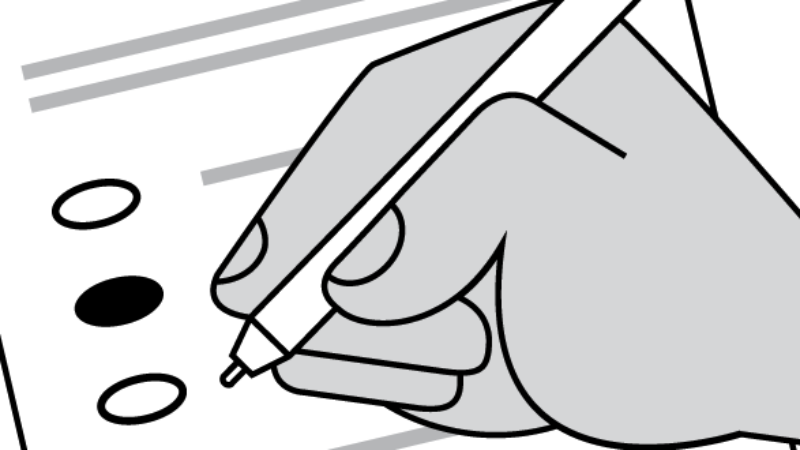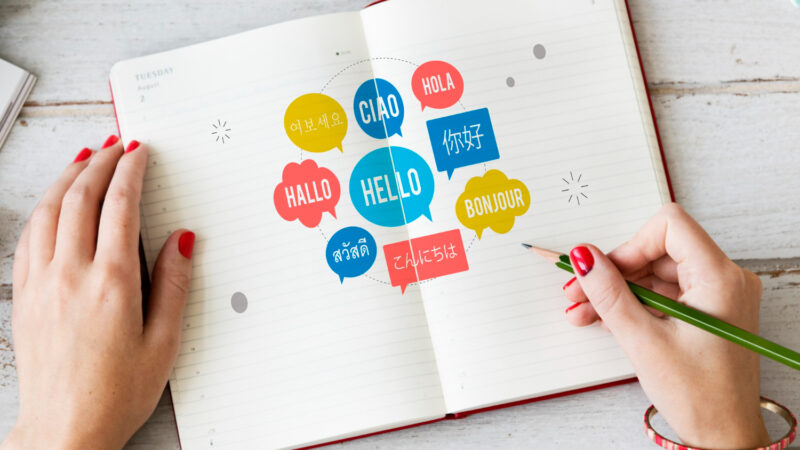Field Guides to Ensuring Voter Intent
Design guidelines backed by solid research and best practices.

What you’ll need
The Field Guides can be used to review one skill area from the volumes, your whole suite of voting materials, or to brush up on your skills.
You can access all the Field Guides from this page.
Regardless of whether you are honing in on one volume or all 10, you will need:
- Any materials your office wants to work on based on these guidelines
- Staff member(s) responsible for creating the specific materials you are reviewing based on the volume you are reviewing.
Core Instructions
Vol. 01: Designing usable ballots
A ballot represents the most important interaction between a government and its citizens. Thousands of votes are lost in elections every year because of poorly designed ballots. And yet, avoiding these design issues is not difficult or expensive.
What a ballot looks like is constrained by legislation, technology, history, custom, cost, and other factors. But the anatomy of a ballot is consistent throughout the more than 3,000 counties, parishes, and boroughs in the United States. Design guidelines provide a tool for helping voters focus on their goal to cast votes for their preferred candidates.
Vol. 01 includes 10 tips for designing better ballots, ensuring voters can vote the way they intend.
Vol. 02: Writing instructions voters understand
The best way to write instructions voters understand is to write with plain language in mind. Plain language (also called plain writing or plain English) is a writing and communication method. The goal is that readers can:
- Find what they need
- Understand what they find
- Use the information
Vol. 02 includes 10 tips for writing in plain language. They are centered on ballot instructions, but they are universal for writing any voting material.
Vol. 03: Testing ballots for usability
Usability testing is a tool for learning where people interacting with a design – such as a ballot – encounter frustration and then translating what you see and hear to make a better design that will eliminate those frustrations.
At its essence, usability testing is a simple technique: Watch and listen to people who are like your voters as they use a design as they normally would (or as close to normal as you can get).
Vol. 3 includes 10 tips to get you started usability testing. The ballot is in the title, but these same tips can be used to test a range of materials.
Vol. 04: Effective poll worker materials
Poll workers connect the election department to the voter. In a polling place, if voters have questions or problems, poll workers are the voice of the election department. It is crucial that poll workers deliver the correct information the right way at the right time.
It is also critical to the success of an election that poll workers set up, operate, and shut down voting machines properly on Election Day. But they don’t always remember everything they learned.
Vol. 04 includes 10 tips for writing clear, simple, and easy-to-use poll worker materials.
Vol. 05: Choosing how to communicate with voters
Election officials have more ways to communicate with voters than ever before, from traditional printed booklets, to the web, radio and TV, and social media.
Vol. 05 includes 10 tips for how to use each communication channel effectively. These tips are intended to help you think about how to coordinate election information across many different media.
Vol. 06: Designing voter education booklets and flyers
With each election, voters receive many flyers and booklets to help them understand the election process, register, find their polling places, and learn what’s on the ballot for each election. If you are not careful, voters can be overwhelmed by the amount of information they receive.
Vol. 06 includes 10 tips for designing voter education material that will not overwhelm voters while ensuring they still understand all the nuances of an upcoming election.
Vol. 07: Designing election department websites
Voters increasingly rely on online sources for information about where to vote, what’s on the ballot, and when they can vote. But, some voters are unaware that their county, parish, or town even has a website about elections. When voters can’t find information and aren’t sure about where to go and what to do when they find a polling place, they’re less likely to vote at all.
Vol. 07 includes 10 tips for designing websites that answer voters’ questions, making them confident in their ability to vote.
Vol. 08: Guiding voters through the polling place
Polling places can be confusing, especially during peak times when many voters are waiting to vote. Clear, easy-to-find, easy-to-read signs can help voters navigate the process smoothly, keeping lines moving and minimizing waiting time.
Vol. 08 includes 10 tips for making functional polling place signage.
Vol. 09: Creating accessible online information
The people who come to your website have a wide range of needs. When we talk about making websites and other materials accessible, the focus is usually on making them work for people who use assistive technology. They might use screen readers or ZoomText to read visual materials, use special keyboards or pointers to navigate and type, or rely on captions and transcripts for audio.
The same techniques for designing accessible websites also help people who may not think of themselves as having a disability. When we design websites to be flexible and accessible, people with low literacy or limited English skills, aging eyes, or a temporary injury can all use websites more easily.
Vol. 09 includes 10 tips for making websites accessible for all.
Vol. 10: Creating forms that help voters take action
Elections are built on a foundation of forms, and voters are asked to provide a lot of information. The design of a form can make your work easier or more difficult, depending on whether an office’s suite of forms is overly complicated and hard to navigate.
Vol. 10 includes 10 tips for creating forms that make it easy for people to give you the necessary information.
Customizing for your office
Any tips for customizing this resource for my office?
The Field Guides are a set of research-driven best practices to help you customize your new or existing voter materials. The tips in all 10 volumes build on each other to help you create the best possible materials for your office.
How do I know if this resource is helping?
Depending on which volume you are focusing your efforts on, there will be different indications that the work you did is making a sustained impact. If you are focusing on poll worker materials, that might look like more confident performances of job functions, fewer calls into your helpline during voting, or increased poll worker retention rates. If you are working on more voter-centric materials, the impact might look like higher turnout or civic participation, fewer calls from voters about questions they have, or an increase of new voters from previously underserved communities.
Which Standards of Excellence does this resource support?
- Managing poll workers
- Plain language
- Information design
- Voter communications
Which Values of Excellence does this resource support? Why?
Values for the U.S. Alliance for Election Excellence define our shared vision for the way election departments across the country can aspire to excellence. These values help us navigate the challenges of delivering successful elections and maintaining our healthy democracy.
Alliance values are nonpartisan and designed by local election officials, designers, technologists and other experts to support local election departments.
You may find this tool especially helpful for this Value:
- Voter-centricity. Field guides are a set of guidelines that help offices create materials that ensure voters feel confident while they navigate all stages of voting.
- Comprehensive preparedness. Field guides are a research-driven set of design guidelines that election officials can use to build tools that help document procedures and inform poll workers, elections staff, and voters.
To learn more about the Values for Election Excellence, and to see the full list, visit the Alliance website.
Sharing feedbackSharing feedback
How was this resource developed?
This resource has been used in elections offices across the country. They were developed after extensive research by the Elections Assistance Commission (EAC), the National Institute of Standards and Technology (NIST), and the Center for Civic Design.
How do I stay in touch?
- For the latest news, resources, and more, sign up for our email list.
- Have a specific idea, piece of feedback, or question? Send and email to support@ElectionExcellence.org


